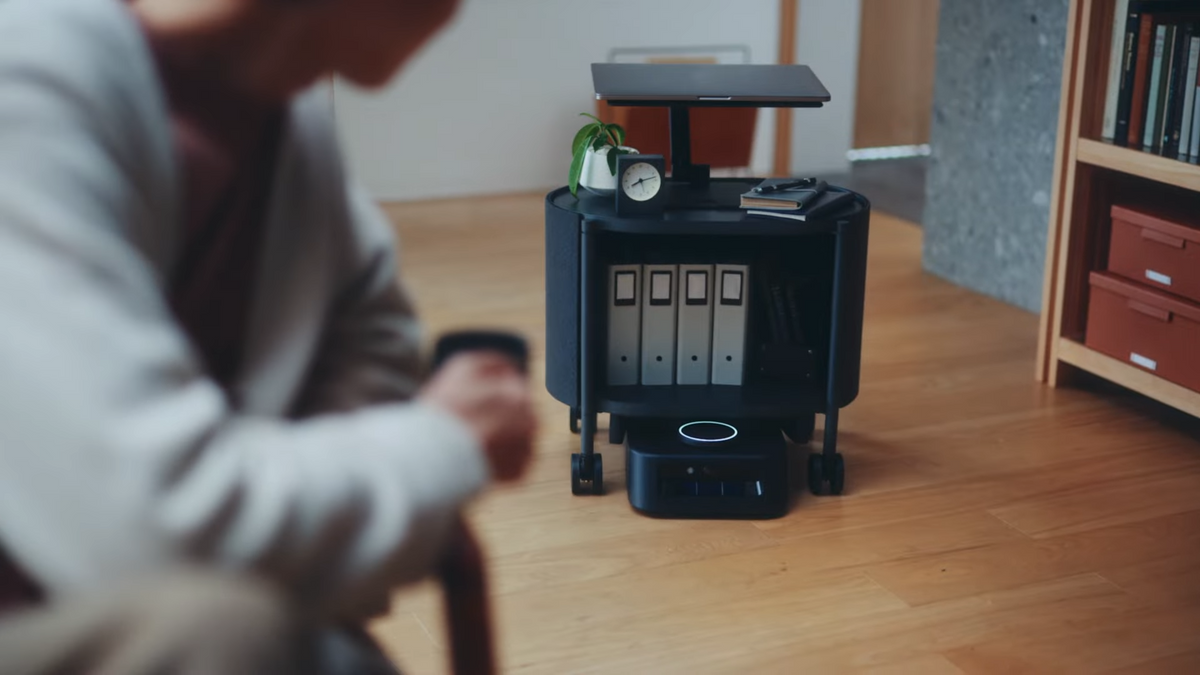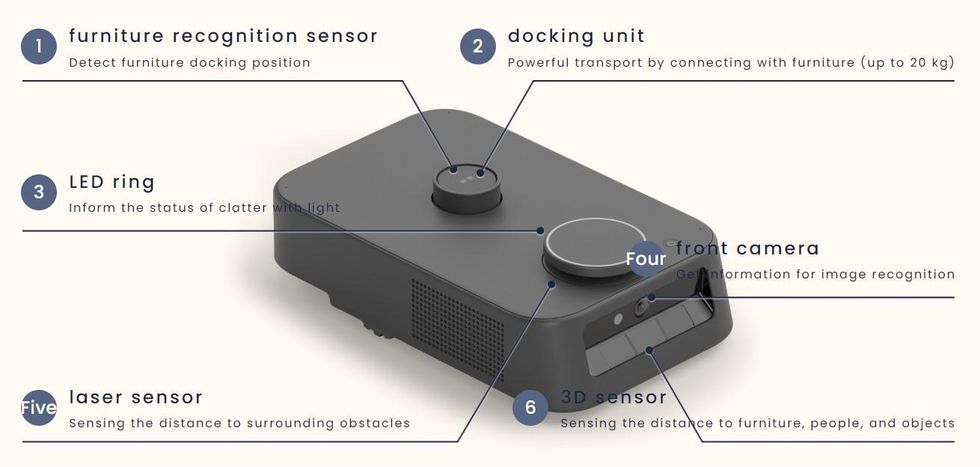A couple of decades ago Kiva Systems had the brilliant and certainly very valuable realization that it was possible to make an entire environment (like a fulfillment warehouse) robotic without filling that entire environment with robots. Rather than making every shelf in a warehouse into a robot, you could instead leave every shelf as a shelf, and simply make a robot that could interface with shelves on demand, giving them mobility when required.
So what if you take that philosophy out of the warehouse and into your living room? Well, it’s probably not going to massively boost your productivity or increase your own personal fulfillment all that much, but it’s an interesting idea that might make some things a little more convenient from time to time.
Kachaka is an autonomous mobile robot that shares many features with the kinds of autonomous mobile robots that you find in warehouses. It’s got a planar lidar sensor, front-mounted cameras and a basic 3D sensor, and a set of drive wheels plus casters. It can make maps and navigate autonomously and whatnot. On top, it’s got a little pin of sorts that it can extend and retract, which enables the robot’s entire purpose: It can drive underneath specially made wheeled shelving units, extend that pin into a slot underneath the bottom shelf, and then drive off, bringing the shelves along with it.
You could imagine having several different shelving units that are brought to you automatically depending on what’s on your schedule, and when not in use, the shelves can be stored out of the way, reducing clutter and giving you more usable space. Of course, all of this works only if you have the right stuff on your mobile shelves to begin with, a problem that Labrador has solved for food with a custom actuated fridge.
What Kachaka has going for it is that it’s building off of robotic technology that’s already very mature—functionally identical systems have been operating in warehouses for years. But at the same time, the issue that Kachaka may struggle with is that it’s not operating in a warehouse, meaning that it has to deal with home environments that have far less structure to them, as well as a much different value proposition. Unlike with warehouse robots, Kachaka will likely spend most of its time not in use, which could make its cost hard to justify. Buying the robot plus one two-tier shelf will cost you about US $2,000 in total, plus an $8 per month subscription fee.
It’s fun to imagine what a system like this could do in the future, if more pieces of furniture (and floors) were compatible with it. For example, you could have one room of your house dedicated to furniture storage, while most other rooms could be multipurpose, with robots adding and removing furniture as you require. A breakfast nook, dining room, craft room, exercise room, workshop, all of these could potentially be the same room, just at different times, enabled by furniture-moving robots. Kachaka isn’t that, obviously, but it’s wheeling its cute little shelf in the right direction.
- Amazon Shows Off Impressive New Warehouse Robots ›
- Why Kiva Is Worth $775 Million to Amazon ›
- Labrador Addresses Critical Need With Deceptively Simple Home Robot ›
Evan Ackerman is a senior editor at IEEE Spectrum. Since 2007, he has written over 6,000 articles on robotics and technology. He has a degree in Martian geology and is excellent at playing bagpipes.




